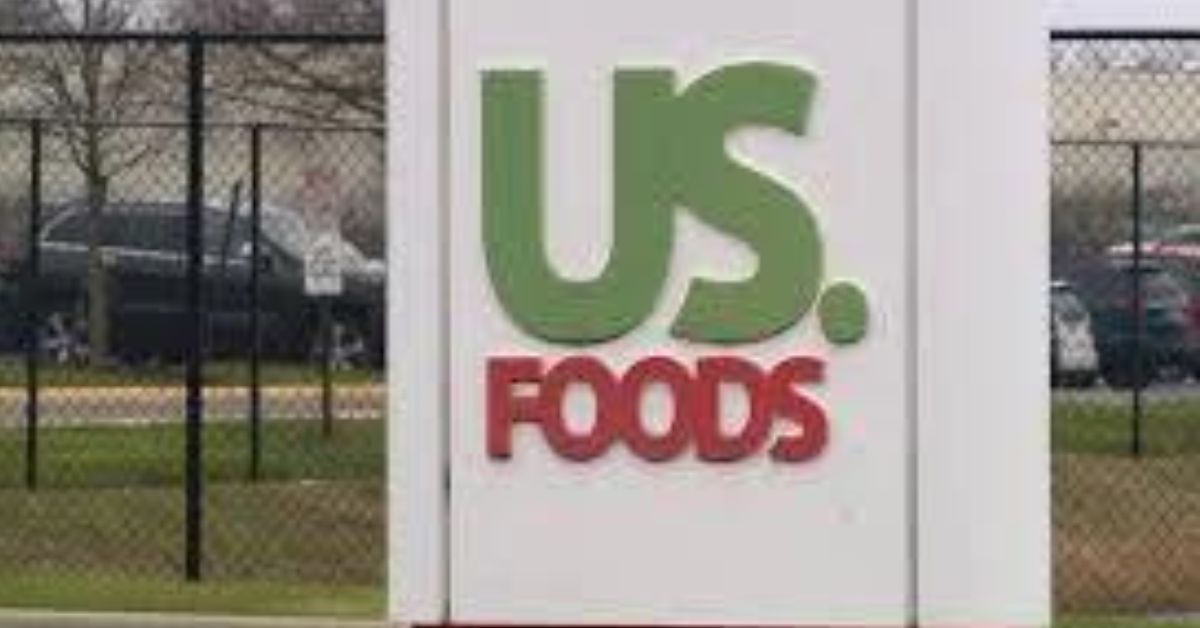Introduction
Labor disputes have long been a pivotal part of the hard work movement, shaping the dynamics among employers and employees. One of the maximum notable recent labor disputes includes Foods Strike, a major food service distributor inside the United States. This article delves into the causes, effects, and broader implications of the U.S. food strike, imparting a complete review of this vast event.
Background of U.S. Foods
U.S. Foods, based in Rosemont, Illinois, is one of America’s leading food service distributors. The employer substances over 300,000 restaurants and food service operators nationally. With records courting again to the early 20th century, U.S. Foods has grown through various mergers and acquisitions to turn out to be a powerhouse in the meals distribution enterprise.
The Workforce Behind U.S. Foods
The backbone of U.S. Foods’ operations is its staff, which includes heaps of truck drivers, warehouse people, income representatives, and administrative staff. These employees are critical in ensuring the well-timed delivery and pleasant meal products to infinite groups and establishments across the US.
Genesis of the Strike
1. Initial Grievances
The U.S. Foods strike did now not emerge overnight. It was the result of a series of grievances that had been simmering for years. Employees voiced issues over numerous issues, consisting of wages, working situations, process security, and benefits. Despite several rounds of negotiations, the control and the employees’ union, representing the employees, struggled to attain a great settlement.
2. Breakdown in Negotiations
The tipping point got here whilst agreement negotiations broke down, with both aspects not able to reconcile their differences. The union accused the organization of unfair exertions practices, inclusive of insufficient wage increases, poor operating situations, and the outsourcing of jobs. On the opposite hand, U.S. Foods control argued that they had made affordable offers considering the monetary pressures dealing with the enterprise.
The Strike Begins
1. Mobilization and Organization
With negotiations at a deadlock, the union determined to call for a strike. Workers commenced to mobilize, organizing wood strains and rallies to attract interest to their plight. The strike received momentum as more employees joined the motion, and solidarity moves have been held at numerous U.S. Foods locations nationwide.
2. Immediate Impact on Operations
The strike had a right away and profound impact on U.S. Foods’ operations. Deliveries were behind schedule or canceled, and plenty of clients, together with eating places, hospitals, and faculties, faced giant disruptions. The organization needed to scramble to find temporary employees and opportunity distribution techniques to mitigate the strike’s outcomes.
Key Issues at the Heart of the Dispute
1. Wage Disparities
One of the relevant troubles fueling the strike became salary disparities. Workers argued that their wages had now not stored pace with inflation and the growing value of living. Many personnel felt that they had been not being correctly compensated for the annoying nature of their paintings, mainly given the physical toll and long hours concerned.
2. Working Conditions
Working situations were any other primary point of rivalry. Employees suggested hazardous and unhealthy work environments, inclusive of insufficient safety measures, lack of the right system, and immoderate workloads. These situations brought about excessive quotes of harm and burnout among employees.
3. Job Security and Outsourcing
Job security emerged as a critical subject during the strike. Employees had been involved in the growing trend of outsourcing jobs to third-party contractors, which they believed undermined their activity balance and prospects. The union demanded assurances that jobs would not be outsourced and that employees could have a say in any adjustments affecting their roles.
4. Benefits and Healthcare
The adequacy of advantages and healthcare became additionally a large trouble. Workers sought better medical health insurance coverage, retirement blessings, and paid go-away policies. They argued that the prevailing benefits package became inadequate to meet their wishes and provide economic security.
Responses and Reactions
1. Management’s Stance
U.S. Foods’ management maintained that they had been committed to attaining a fair settlement with the union. They highlighted the challenges facing the food service industry, consisting of growing operational prices and aggressive pressures. Management also emphasized their efforts to barter in true faith and offer affordable concessions.
2. Union and Worker Solidarity
The union, representing the placing workers, rallied support from other hard work groups and the general public. They prepared protests, engaged in media campaigns, and sought harmony from other unions. The placing people received enormous help from numerous quarters, bolstering their remedy to retain the fight for better working conditions and truthful wages.
3. Public and Customer Reactions
The public and clients had mixed reactions to the strike. While a few sympathized with the workers and supported their needs, others were frustrated using the disruptions because of the strike. Many companies that trusted U.S. Foods for his or her substances were forced to are searching for opportunity assets, leading to multiplied charges and operational demanding situations.
Broader Implications of the Strike
1. Impact on the Foodservice Industry
The U.S. Foods strike had broader implications for the food service industry as a whole. It highlighted the vulnerabilities inside the supply chain and underscored the importance of labor relations in ensuring easy operations. The strike brought on other companies to reevaluate their hard work practices and take into account the potential results of hard work disputes in their groups.
2. Labor Movement and Workers’ Rights
The strike also had a big effect on the hard work movement inside the United States. It added interest to the demanding situations faced using employees in the food service enterprise and past. The strike served as a rallying point for workers’ rights advocates and highlighted the need for more potent labor protections and fairer working conditions.
3. Legal and Regulatory Ramifications
The felony and regulatory ramifications of the strike have been also noteworthy. The dispute brought about accelerated scrutiny of labor practices and regulatory oversight within the food service enterprise. Lawmakers and regulators began to take into account measures to cope with the problems raised by the strike and make certain better protection for workers.
Resolution and Aftermath
1. Reaching an Agreement
After several weeks of severe negotiations and mediation, U.S. Foods and the union eventually reached a tentative settlement. The agreement blanketed salary will increase, advanced running situations, improved advantages, and assurances concerning job safety. Both aspects expressed remedy on the resolution of the dispute and dedicated to operating collectively to rebuild agreement with and collaboration.
2. Return to Work
With the settlement in the region, employees started to return to painting. The corporation and the union labored collectively to ensure an easy transition and deal with any lingering concerns. The go back to ordinary operations becomes slow, with efforts targeted at rebuilding customer relationships and restoring provider stages.
3. Long-time period Impacts
The long-term influences of the U.S. food strike are nonetheless unfolding. The dispute has left a long-lasting mark on the company, its personnel, and the broader industry. It has prompted a reexamination of exertion practices and highlighted the significance of addressing employees’ worries proactively. The strike has also bolstered the strength of the collective movement and the importance of team spirit in reaching significant exchange.
Lessons Learned
1. Importance of Communication
One of the key lessons from the U.S. Foods strike is the importance of powerful conversation among control and personnel. Open and obvious communication can help cope with grievances early and save your conflicts from escalating into moves. Both facets want to concentrate on each other’s concerns and paint collaboratively to locate answers.
2. Need for Fair Labor Practices
The strike underscored the want for truthful labor practices inside the food service industry and beyond. Companies have to make certain that their personnel are treated fairly, compensated accurately, and provided with safe and healthful operating conditions. Addressing these problems proactively can assist build a more stimulated and dependable body of workers.
3. Role of Unions
The role of unions in protecting workers’ rights and advocating for honest treatment was additionally highlighted by using the strike. Unions play an essential function in giving people a voice and making sure that their worries are heard. Strengthening unions and supporting their efforts can contribute to greater equitable exertions among members of the family.
4. Potential for Industry-extensive Change
The U.S. Foods strike can catalyze industry-huge trade. It has drawn interest to the demanding situations confronted by workers within the food service industry and the need for systemic upgrades. The strike ought to encourage different businesses to reevaluate their labor practices and make vital adjustments to avoid similar disputes in the future.
Conclusion
The U.S. food strike changed into a widespread occasion that highlighted important problems within the exertions relations panorama. It added interest to the grievances of employees, the demanding situations faced by corporations, and the broader implications for the food service enterprise. The decision of the strike via negotiation and compromise serves as a reminder of the importance of addressing labor issues proactively and collaboratively. As the industry moves forward, the classes learned from the U.S. Foods strike will mai form the destiny of hardworking members of the family and employees’ rights inside the United States.








